Rasher Pudding
Yay! Rasher Pudding. I first heard of this in 2014 when I happened to read about it in an old regional cookbook for Hampshire – a county in England. I tried to make it, but it didn’t turn out so well, so I adaped it.
It’s a suet-based pudding. Suet is rolled fat which when combined with flour can be turned into dumplings or suet crust pastry. Indeed, the suet pudding is similar to a dumpling, especially in how it is put together.
Original Recipe (I’d avoid this!)
The original recipe for calls for boiling the suet pudding. Ick! The instructions for that are reproduced here for interest…
Ingredients
- Water
- Plain Flour
- Suet or Lard
- Onion (diced)
- Bacon rashers
- Chopped tomatoes (optional)
- Chopped potatoes (optional)
Method
- Mix pastry using water, flour and fat
- Roll out on a floured surface
- Place bacon, onion and if using tomatoes and potatoes onto pastry
- Carefully roll up like a Swiss roll and place in a pudding cloth
- Secure corners with string
- Place in boiling water in a large saucepan and cook for two hours
- After two hours take Rasher Pudding out of water and let it drain for five minutes
- To serve cut into slices
Thomas’ Version
This mimicks the more traditional steak and kidney pudding people over the age of thirty will likely have had at schools, or – if very lucky – homely grandmothers making them it for dinner of a weekend.
This is a bacon, leek, and onion suet pudding. If you want a vegetarian version, ensure you use vegetarian suet, and leave out the bacon, perhaps even substituting anything you like. It’s a versatile meal.
Equipment
For this recipe, the quantities are measured for a two litre pudding basin – ceramic, although plastic will do just as well. I’m steaming mine, and hence have a dedicated steamer – although a saucepan or a pressure-cooker would do just as well.
Ingredients
For the suet pudding mixture:
- 10oz self-raising flour
- 5oz suet (vegetarian or beef)
For the filling:
- Two large leeks
- Eight rashers of bacon (smoked or unsmoked; I prefer smoked) – chopped/diced
- One large onion (or two small onions) – chopped/diced
Method
-
Gently fry the bacon, leeks and onions together. You want to sweat the ingredients together to remove as much moisture as you can, as you don’t want that to leak into the pudding as it’s cooking.
Once this has happened, leave the mixture to cool, and season with salt and pepper.
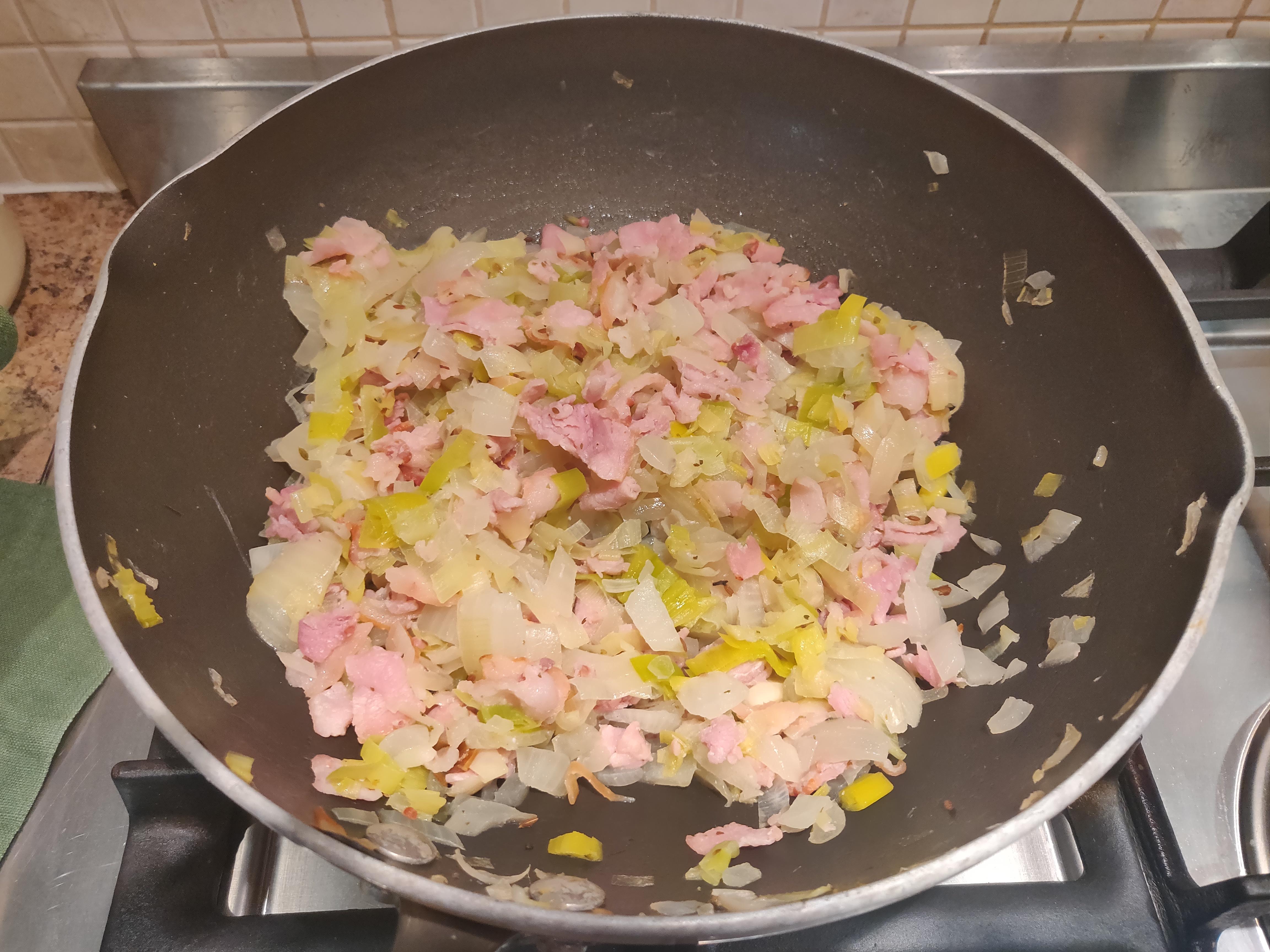
-
Prepare the suet pudding mixture. Into a mixing bowl, add the flour and the suet. Add black pepper, mustard powder, herbs, etc., to taste, and then combine with enough water to bind the mixture togeter.
It will seem quite heavy – especially compared to normal pastry. This is normal. Roll this out quite thinly – enough for it to fill the pudding basin, and have enough left hanging over the sides – as the ends will be gathered up to form the seal of the pudding.
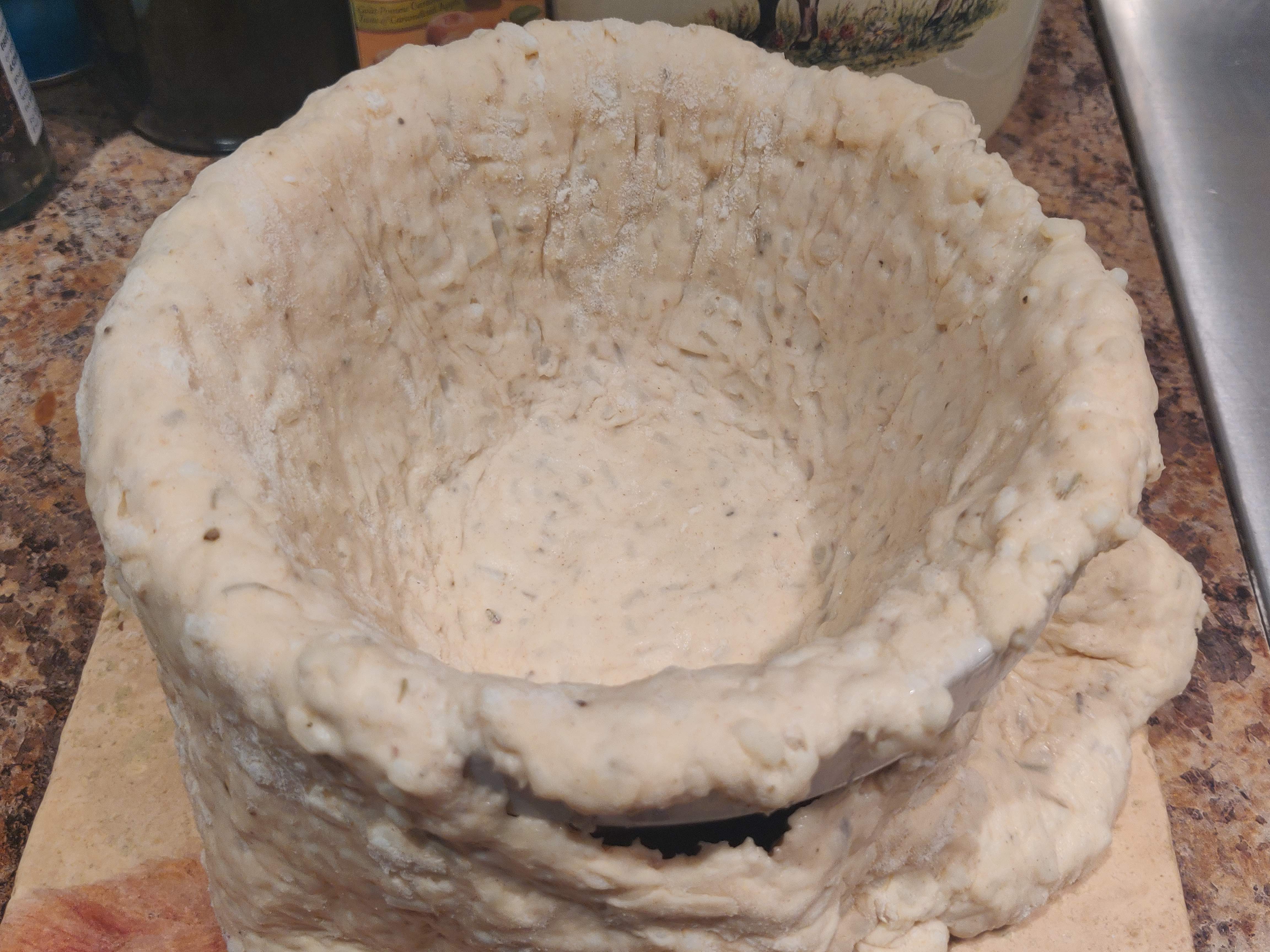
-
Now add the cooled mixture to the basin, pressing down firmly to pack the filling in tightly.

-
Gather the ends of the pastry together and press down tightly to seal the pudding.
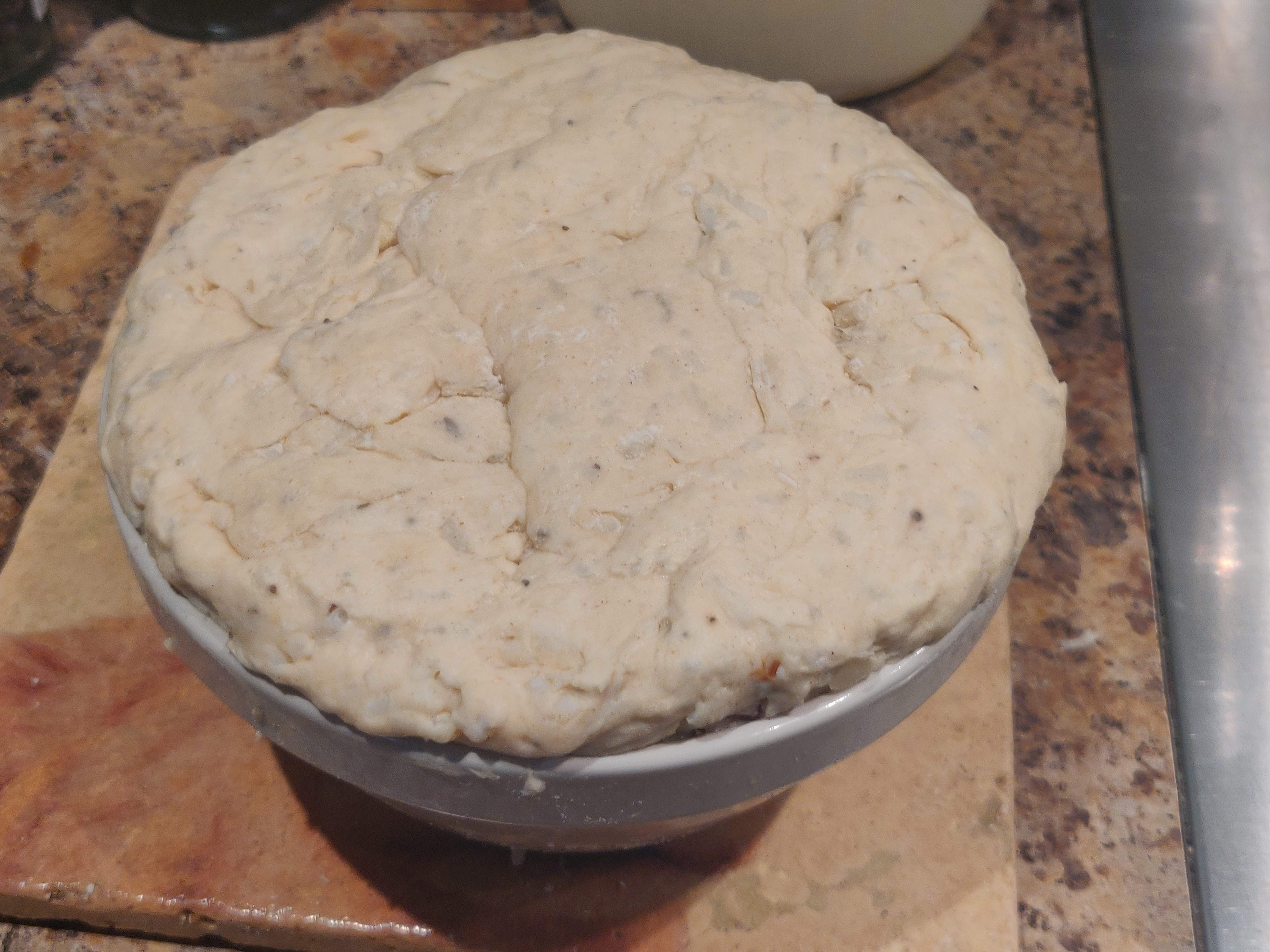
-
Next, prepare the pudding for steaming. I used the following youtube video for prepping the pudding. Note that it’s important to put a grease-proof lid on top of the pudding first of all before covering with foil.
Steam for three hours in a steamer/hob, or 1.5 hours in a pressure cooker.
-
Once the pudding is steamed, lift the lid of the pudding. He should look like this:
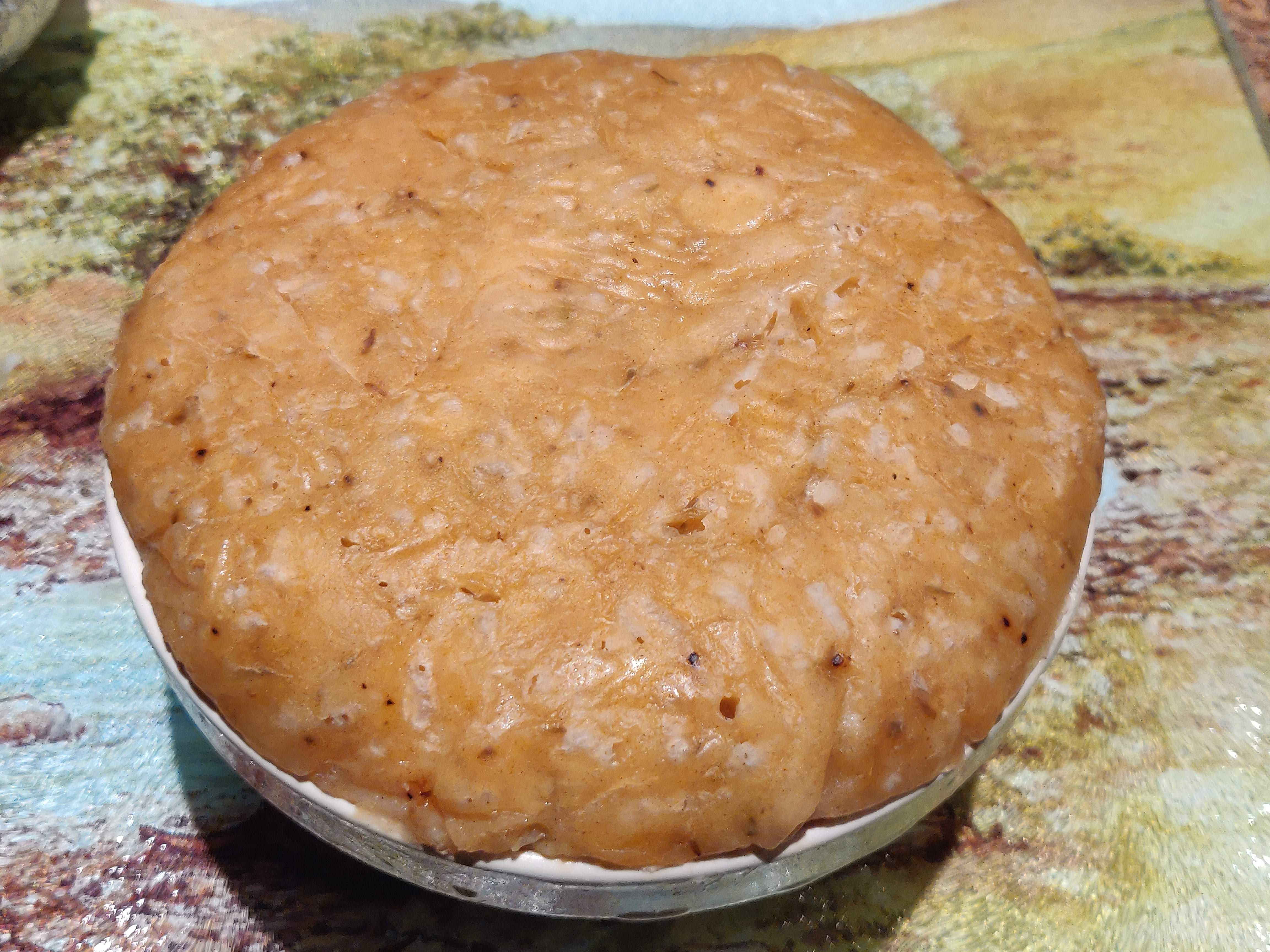
-
Run a pallet knife around the edge of the pudding and turn him up onto a plate:
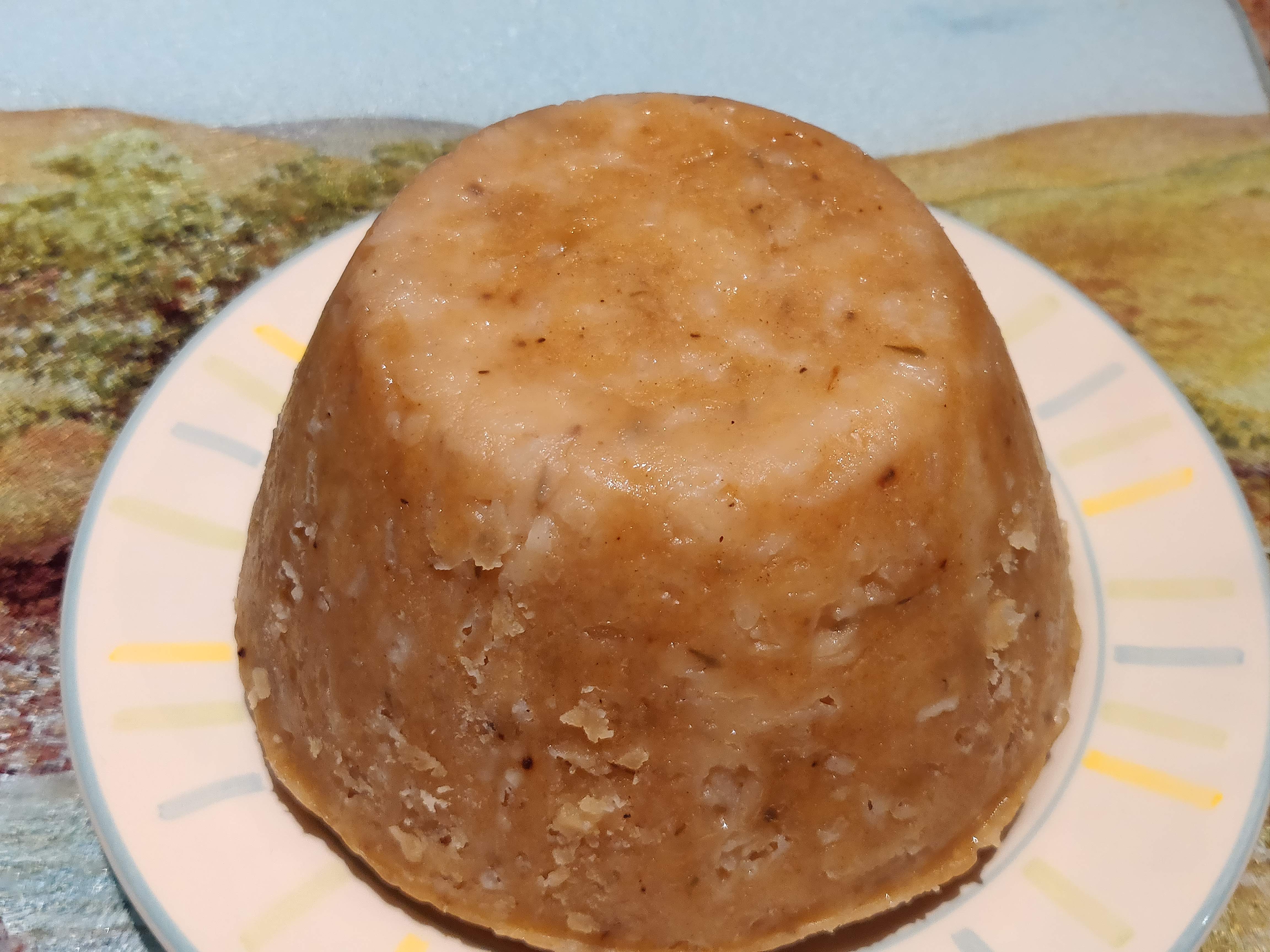
Results
-
Cut into him, and eat him!

Best served with roasted cauliflower…
